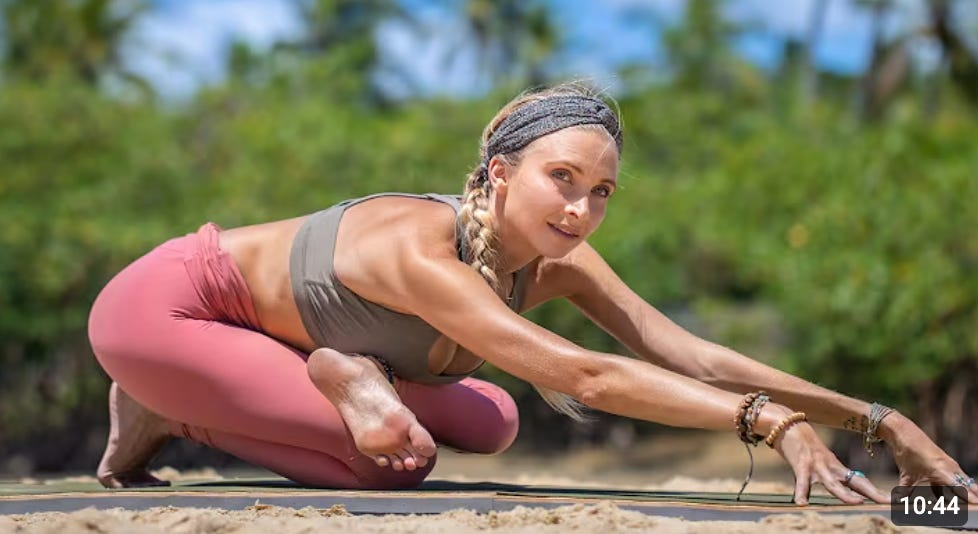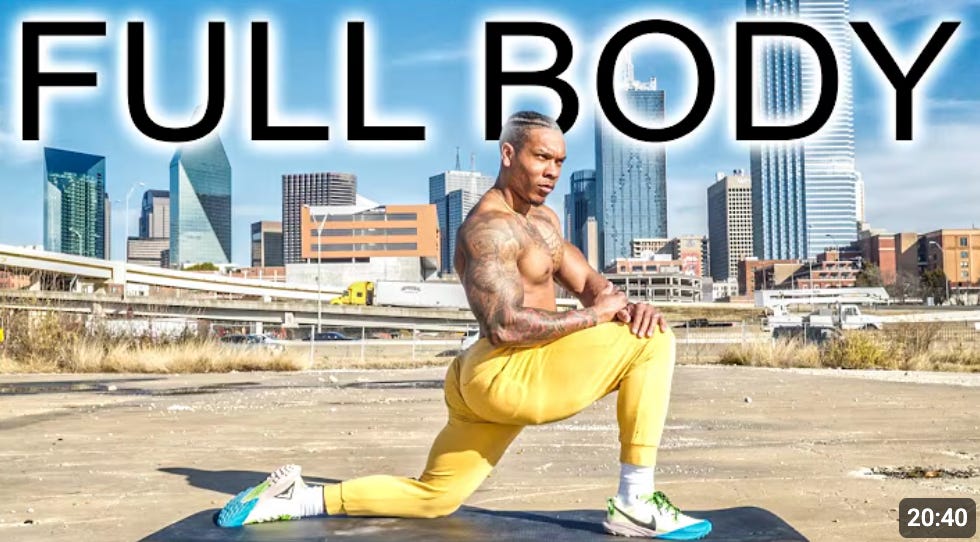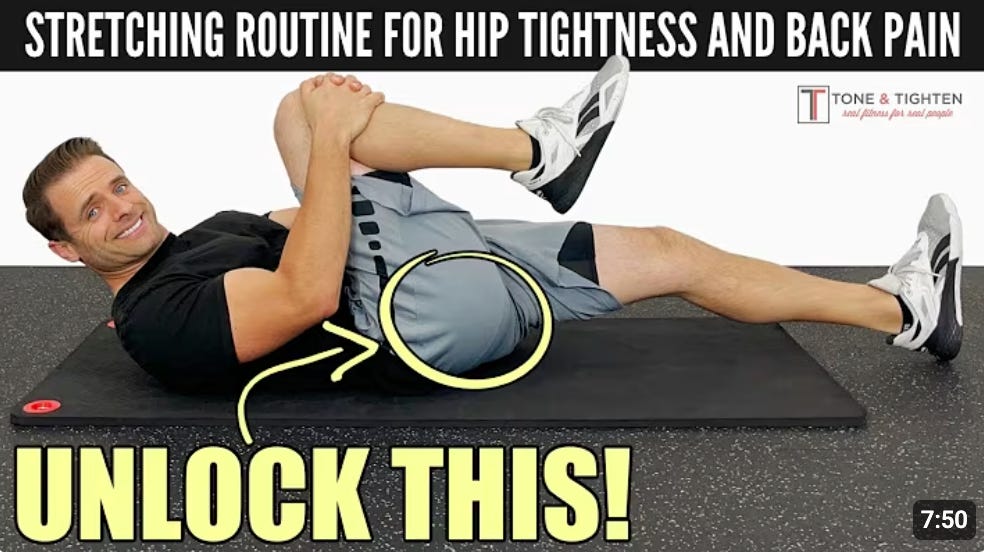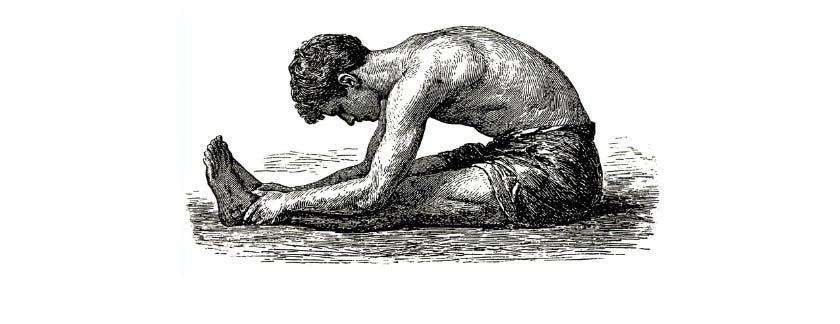The Best Stretches on YouTube
How women in their 50s and 60s are helping me get my flexibility back
As a 44-year-old guy who spends a lot of time in the gym and on the trail, I’m strong, but at the same time, I’m watching my flexibility disappear.
Every year, I lose range of motion. It’s one of the declines that worries me most—and the one I’m trying to be most proactive about.
So, like most of us do, I asked YouTube for help.
What I found surprised me. The best stretching guidance I’ve found comes from women in their 50s and 60s—fitness professionals who’ve been teaching this for decades and understand exactly what I’m dealing with.
I have real goals. I want to be able to wrap my hands around my toes. Touch my palms behind my back. Do a proper quad stretch where my foot actually reaches my butt.
Right now, I can’t. My muscles are too tight.
But these women are showing me how to get there through patience and wisdom I wasn’t finding anywhere else.
Why most stretching videos fail me
Most stretching videos don’t work for me.
Young yoga instructors folding themselves into impossible shapes in videos that look more like graceful performances than maintenance.
Fitness bros with high energy and fast pacing giving shirtless demonstrations.
Impossibly happy physical therapists talking about mobility protocols using sterile, unfamiliar terms.
None of it felt like what I needed.
I just wanted slow, gentle stretches. Relatable, friendly teachers I felt connected to. Calm, therapeutic sessions I looked forward to after a hard workout instead of dreading because they felt like a second workout.
Then I stumbled onto something different
I found them by accident.
I was searching for “stretches after walking” because my hips and hamstrings were tight after rucking and nobody seemed to be talking about stretching after low-impact work. Most results assumed walking was the recovery.
That’s when I stumbled onto Michelle Kenway. And Shelly from Fabulous 50s. Women teaching stretching in a way I’d never seen before.
The pacing was slower. The voice was warm. Inviting.
The cues weren’t about pushing deeper or holding longer. They were about finding the release. Breathing into it. Sitting with the stretch instead of fighting through it.
Zero intensity. Just presence.
I tried one video. Then another. Then I kept coming back.
Not because the stretches were revolutionary—hip openers, spinal twists, hamstring releases. Basic movements. But because the way they taught changed everything.
These women weren’t performing. They were guiding. Like sitting with someone who understands that bodies change. Who knows that sometimes you just need something that works without asking for more than you can give.
What surprised me most was how much I enjoyed listening to them. Their voices felt like conversations with a friend instead of instructions from a trainer. I started looking forward to those 10 or 15 minutes—not just for the physical release, but for the calm it created.
Stretching stopped being a chore. It became something I looked forward to.
What the right teacher actually does
This made me realize something about choosing a teacher. The best teacher isn’t necessarily the one with the most credentials… the one with the most advanced techniques… or one with the most polished audio-visuals.
The best teacher is the one who understands what you’re actually working with.
These women have decades of experience teaching real bodies—bodies that have lived, adapted, changed. And it’s working.
My hamstrings are releasing. My hips are opening up. I’m not wrapping my hands around my toes yet, but I’m closer than I was a month ago.
More importantly, I’m showing up consistently. Because it doesn’t feel like punishment. It feels like taking care of something that matters.
That’s the difference between a stretching routine you abandon after two weeks and one you actually sustain.
The bigger lesson
This whole experience made me think: where else am I choosing intensity over what actually works for my body?
The whole point of “sustainable strength” is training for tomorrow, not just today. It’s starting small and building momentum. It’s respecting your body instead of demanding it keep up with some arbitrary standard that was never designed for you in the first place.
These stretching videos reminded me of that.
Progress isn’t always about doing more. Sometimes it’s about finding what actually works and showing up consistently instead of burning out on something that looks impressive but doesn’t serve you.
The right path forward isn’t always the hardest one. Sometimes it’s the one that meets you where you are and helps you keep moving.
How about you? Have you found guides who actually help you make progress? What’s working for your body right now?
Hit reply and let me know. I read every response.
Questions, comments, and suggestions?
Thanks for reading,
-Marek






